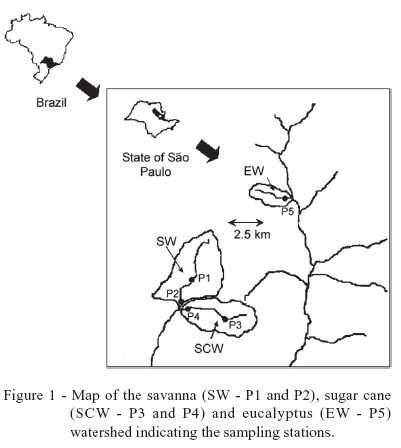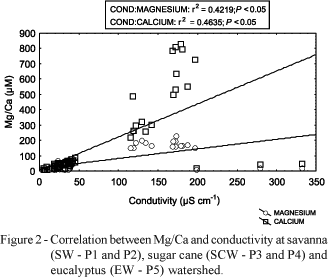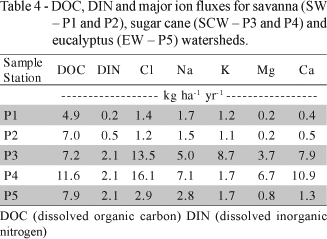Several studies in tropical watersheds have evaluated the impact of urbanization and agricultural practices on water quality. In Brazil, savannas (known regionally as Cerrados) represent 23% of the country's surface, representing an important share to the national primary growth product, especially due to intense agriculture. The purpose of this study is to present a comprehensive evaluation, on a yearly basis, of carbon, nitrogen and major ion fluxes in streams crossing areas under different land use (natural vegetation, sugar cane and eucalyptus) in a savanna region of SE Brazil. Eucalyptus and sugar cane alter the transport of the investigated elements in small watersheds. The highest concentration of all parameters (abiotic parameters, ions, dissolved organic carbon DOC - and dissolved inorganic carbon - DIC) were found in Sugar Cane Watersheds (SCW). The observed concentrations of major cations in Eucalyptus Watersheds (EW) (Mg, Ca, K, Na), as well as DIN and DOC, were found frequently to be intermediate values between those of Savanna Watersheds (SW) and SCW, suggesting a moderate impact of eucalyptus plantations on the streamwater. Same trends were found in relation to ion and nutrient fluxes, where the higher values corresponded to SCW. It is suggested that sugar cane plantations might be playing an important role in altering the chemistry of water bodies.
savanna; nutrients; watershed; sugar cane; eucalyptus








